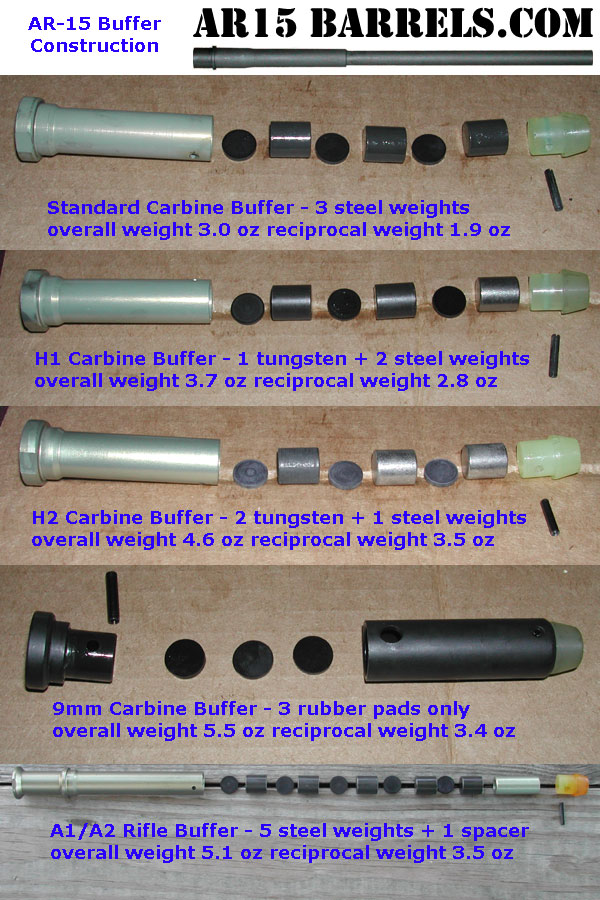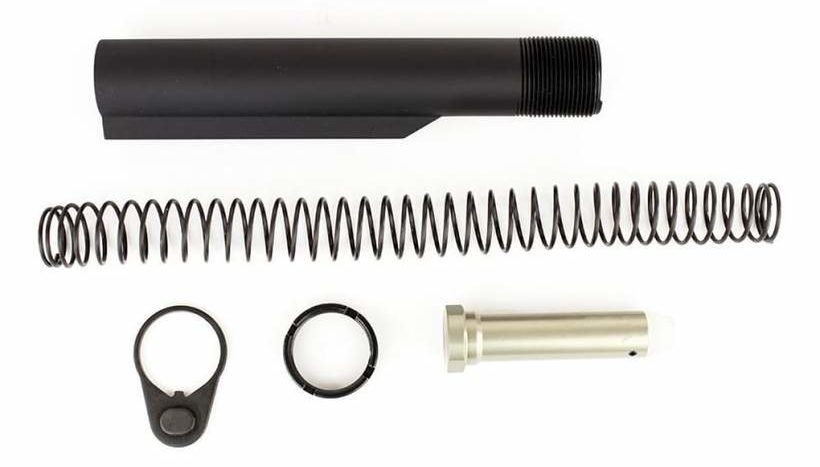

Short stroking can happen with any firearm and symptoms include failure to feed and failure to extract. The caveat that all builders should know is that if you go with too heavy of a buffer it can cause the rifle to short stroke.

If the H2 still felt too punchy for you, the same concept from above applies here - the H3 will move even slower due to the heavier weight to alleviate even more recoil. H3 buffers will weigh between 5 to 5.4 ounces, the heaviest among carbine-sized buffers. Those who do use rifle buffers usually will pair it with a fixed stock such as the mil-spec A2, VLTOR A5, Magpul PRS, MOE Fixed Carbine Stock. Rifle buffers will weigh and vary from 5.0 – 5.2 ounces. Most people just use carbine-sized buffers now. Rifle buffers are still around but honestly aren’t seen as often because they’re from an older generation’s design for buffer weights. Any 16” length AR-15 or shorter should be able to use an H2 buffer however every gun does behave differently so the compatibility is going to depend on the coming together of all your other parts as well such as the gas block, BCG, or muzzle device. If the BCG still feels like it’s cycling too hard, shooters often will choose this buffer to get their carbines to shoot even softer. The 20% increase in weight aids in reducing perceived felt recoil and also reduces wear on your AR. H (Heavy) and H1 buffers are the same thing but are used interchangeably throughout the internet so no need to get confused about this one. Though buffers may vary in weight, they typically will all look similar to the one in the photo above unless it’s a specialized buffer. This buffer will work for carbine-length AR’s, sits at 3.0 ounces and is considered a basic standard that most buffer tube kits and factory built rifles will come with because of its higher reliability. Of course we all prefer a reliable gun over something that doesn’t work but if you’re looking to pick the optimal buffer weight for you to ever so slightly fine tune your AR these are your options to consider: Carbine Buffer

A lot of factory built guns will tend to run a little over-gassed so that the rifle will run reliably in any weather condition and with a larger variety of ammunition loads. Which Buffer Weight To ChooseĮvery AR-style rifle is going to run a little differently. Depending on the buffer, those individual weights will be a combination of steel and tungsten weights. Depending on the quality of the spring and the amount of weight the buffer has, it can help absorb some of the recoil and provide a smoother cycle of the bolt going back and forth - this creates a better shooting experience and allows for faster follow up shots.Įach buffer will have small individual weights inside that add up to specific weights making it optimal for a certain set of rifles. When that BCG goes back it relies on the buffer weight to send it back into battery which is how the BCG picks up a new round from the magazine and chambers it, getting you ready for the next shot.Īll the buffer weight includes is a weight and a spring (sometimes referred to as a “recoil spring”). When a round is fired from the chamber of an AR-15, gas flows back to push the bolt carrier group towards the shooter as it extracts the spent round’s casing. You could have the most expensive trigger and muzzle device in the world but if you’ve got the wrong buffer weight, your AR-15 could operate sub-optimally, not work at all or ruin the experience altogether. It’s important to not overlook the buffer weight because it’s one of the most important parts in creating your experience as a shooter with that gun. It’s easy to forget about the buffer weight in your AR-15 because unless the rifle was built yourself, chances are you’ve never even seen it before.


 0 kommentar(er)
0 kommentar(er)
